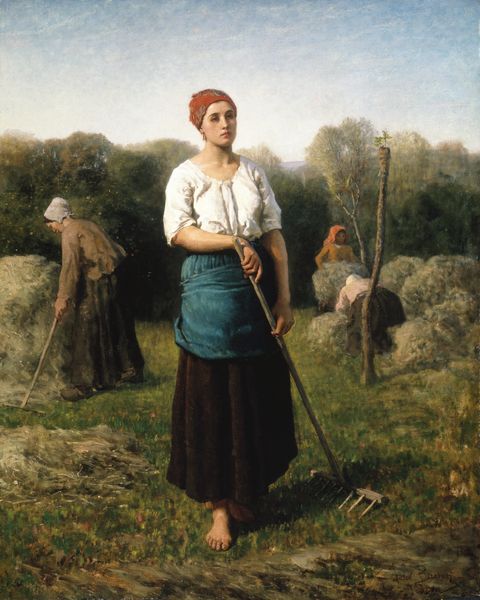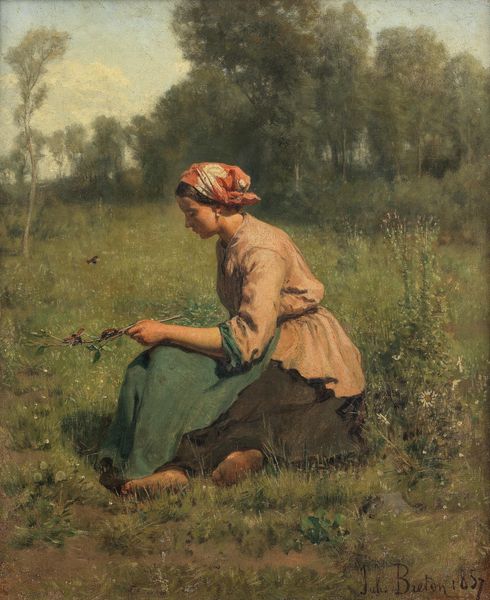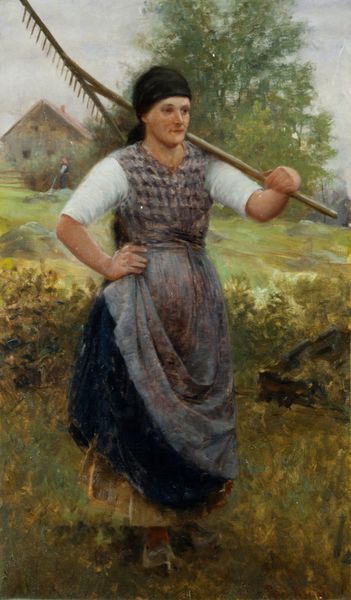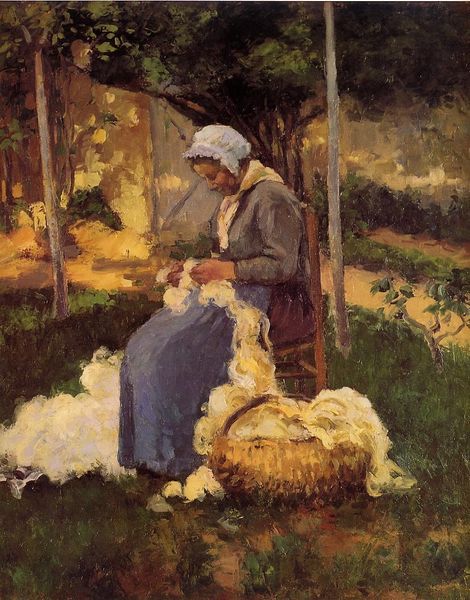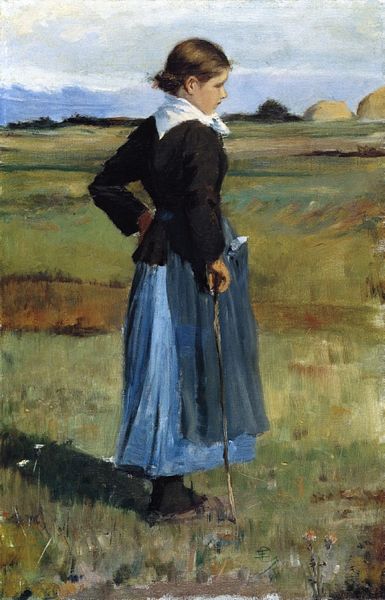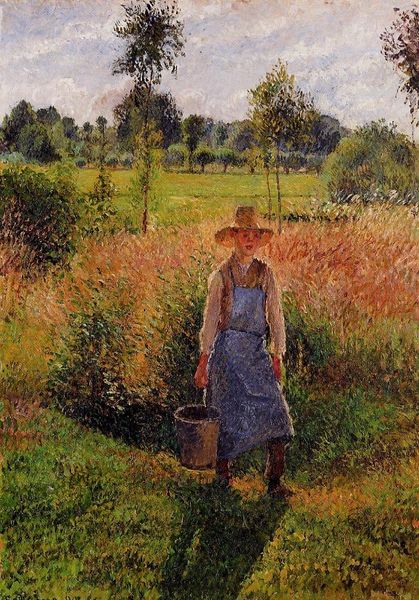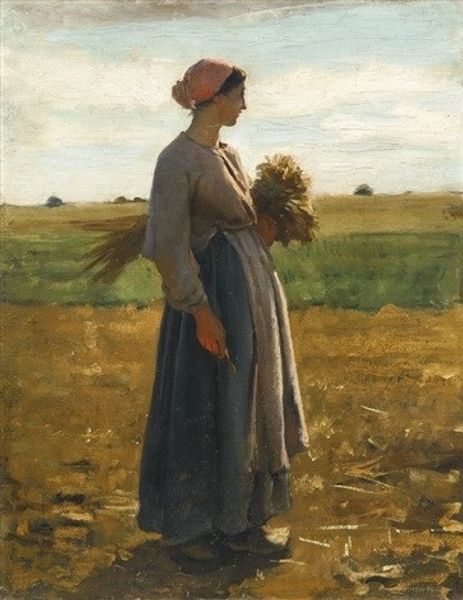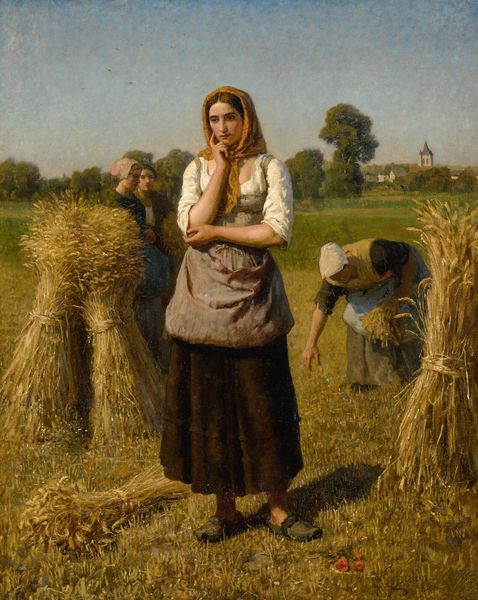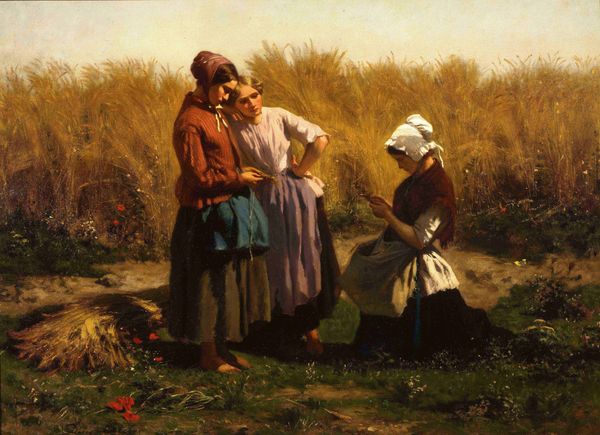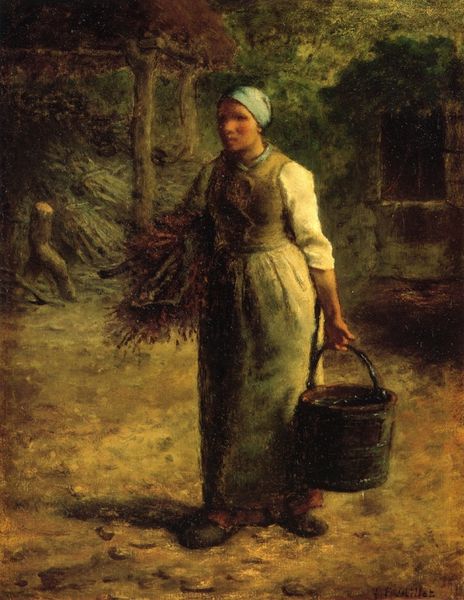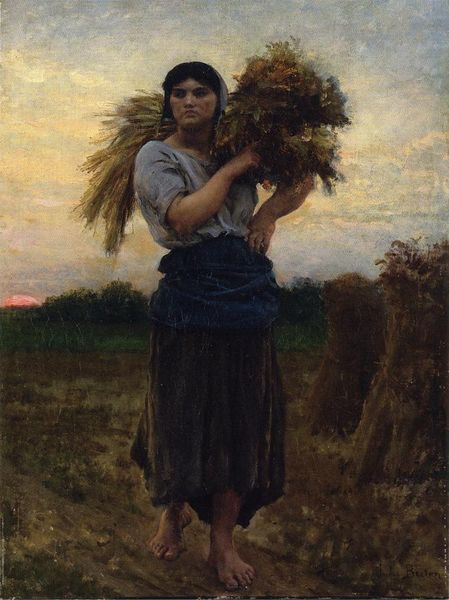
Copyright: Public domain
Editor: This is "Springtime," a painting from 1902 by Jules Breton. It depicts a woman working in a field, and I'm immediately struck by the earthy tones and the realism of the scene. What can you tell me about this piece? Curator: Consider the material conditions of its creation. Breton's meticulous plein-air technique, for instance. How does working outside, directly confronting the elements, influence the texture and color choices evident in the finished painting? The tangible realities of rural labor and the equipment and attire – her simple tools and functional garments - all underscore the processes and conditions of rural existence at the time. Editor: That’s a great point. Seeing how her clothing appears worn suggests the hardships that the woman may experience while working. How does the emphasis on materiality in this painting reflect broader societal values or anxieties of the era? Curator: It's a question of production versus consumption, right? As industrialization rapidly transformed France, genre paintings depicting rural labor provided an increasingly idealized vision of pre-industrial work, masking the brutal realities faced by the working class. Breton isn't just showing labor; he’s packaging and selling a palatable narrative of it. Is this a painting about honest toil or about bourgeois anxieties regarding it? Editor: I hadn't considered that contrast, very insightful. I see now how studying materials gives us a deeper view into social narratives surrounding the painting. Curator: Precisely. Focusing on materiality reframes what art *does,* making artmaking into a type of labor that, much like Breton’s subject, both consumes and produces.
Comments
No comments
Be the first to comment and join the conversation on the ultimate creative platform.

